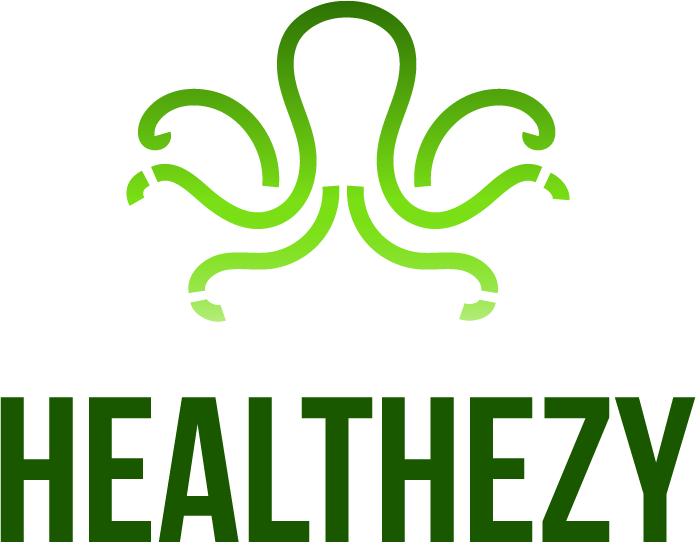Overview
Importance of product safety in the cosmetic industry
Product safety is of utmost importance in the cosmetic industry. With the increasing awareness and demand for safe and effective cosmetic products, manufacturers are placing a greater emphasis on ensuring the safety of their products.
The cosmetic industry is highly regulated, with various laws and regulations in place to protect consumers. These regulations require companies to conduct thorough testing and evaluation of their products to ensure that they are safe for use.
This includes testing for potential allergens, irritants, and other harmful ingredients. By prioritizing product safety, the cosmetic industry aims to provide consumers with products that are not only effective but also safe for use on their skin and body.
Regulatory bodies and guidelines for product safety
Regulatory bodies play a crucial role in ensuring the safety of cosmetic products. These organizations are responsible for setting guidelines and standards that manufacturers must adhere to.
In the cosmetic industry, regulatory bodies such as the Food and Drug Administration (FDA) in the United States and the European Commission in Europe have established strict regulations to protect consumers.
These guidelines cover various aspects of product safety, including the use of ingredients, labeling requirements, and manufacturing practices. By following these guidelines, cosmetic companies can ensure that their products are safe for use and meet the necessary quality standards.
Consumer demand for safe cosmetic products
Consumer demand for safe cosmetic products is on the rise. With increasing awareness about the potential risks associated with certain ingredients, consumers are becoming more vigilant about the products they use on their skin and hair.
They are actively seeking out cosmetics that are free from harmful chemicals and are produced using sustainable and ethical practices. This growing demand has prompted the cosmetic industry to prioritize product safety and invest in research and development to ensure that their products meet the highest safety standards.
As a result, consumers can now choose from a wide range of safe and effective cosmetic products that cater to their specific needs and preferences.
Product Testing and Evaluation
Types of tests conducted to ensure product safety
There are various types of tests conducted to ensure the safety of cosmetic products. These tests include but are not limited to: skin irritation tests, eye irritation tests, sensitization tests, microbiological tests, and stability tests.
Skin irritation tests are performed to determine the potential of a product to cause irritation or allergic reactions on the skin. Eye irritation tests evaluate the potential of a product to cause irritation or damage to the eyes.
Sensitization tests assess the potential of a product to cause an allergic reaction in individuals. Microbiological tests are conducted to ensure that cosmetic products are free from harmful microorganisms.
Stability tests evaluate the shelf life and performance of a product under various conditions such as temperature and humidity. By conducting these tests, the cosmetic industry aims to ensure the safety and efficacy of their products.
Evaluation of ingredients for potential risks
The evaluation of ingredients for potential risks is a crucial step in ensuring the safety of cosmetic products. Cosmetic industry professionals carefully assess the ingredients used in their formulations to identify any potential risks to consumer health.
This process involves conducting thorough research and analysis to determine the safety profile of each ingredient. Various factors, such as toxicity, allergenicity, and potential for irritation, are taken into consideration during the evaluation.
By prioritizing product safety, the cosmetic industry aims to provide consumers with high-quality and safe products that meet their needs and expectations.
Animal testing and alternatives
Animal testing has long been a controversial topic in the cosmetic industry. While some argue that it is necessary to ensure the safety of products, others believe that it is cruel and unnecessary. In recent years, there has been a growing focus on finding alternatives to animal testing.
This includes the development of innovative technologies and the use of in vitro and computer models. These alternatives not only eliminate the need for animal testing but also provide more accurate and reliable results.
The cosmetic industry is actively working towards reducing and eventually eliminating the use of animals in testing, demonstrating its commitment to product safety and ethical practices.
Labeling and Packaging Regulations
Requirements for ingredient labeling
In the cosmetic industry, ingredient labeling plays a crucial role in ensuring product safety. The requirements for ingredient labeling are designed to provide consumers with essential information about the ingredients used in cosmetic products.
By clearly stating the ingredients on the product label, manufacturers enable consumers to make informed choices and avoid potential allergens or irritants. Additionally, ingredient labeling helps regulatory authorities monitor compliance with safety regulations and investigate any potential issues.
Overall, the focus on ingredient labeling in the cosmetic industry highlights the industry’s commitment to product safety and consumer protection.
Packaging safety and tamper-evident features
Packaging safety and tamper-evident features are crucial in the cosmetic industry. With the increasing concerns about product safety, manufacturers are taking extra measures to ensure that their packaging is secure and tamper-proof.
This includes using tamper-evident seals, such as shrink bands or breakable caps, to provide visible evidence of tampering. Additionally, packaging materials are carefully selected to prevent contamination and maintain the integrity of the product.
By prioritizing packaging safety, the cosmetic industry aims to build trust with consumers and ensure the delivery of safe and reliable products.
Claims substantiation and advertising guidelines
Claims substantiation and advertising guidelines play a crucial role in the cosmetic industry’s focus on product safety. These guidelines ensure that the claims made by cosmetic companies are supported by scientific evidence and are not misleading to consumers.
By requiring substantiation for claims such as ‘clinically proven’ or ‘dermatologist recommended,’ regulatory bodies help protect consumers from false or exaggerated advertising. Additionally, advertising guidelines set standards for the presentation and communication of cosmetic products, ensuring that they are accurately represented to consumers.
By adhering to these guidelines, the cosmetic industry aims to prioritize the safety and well-being of its customers.
Quality Control and Manufacturing Practices

Good Manufacturing Practices (GMP) in the cosmetic industry
Good Manufacturing Practices (GMP) in the cosmetic industry are a set of guidelines and regulations that ensure the safety and quality of cosmetic products. These practices encompass various aspects of the manufacturing process. This includes ingredient sourcing, product formulation, packaging, labeling, and storage.
GMP standards require cosmetic manufacturers to maintain clean and hygienic production facilities, implement rigorous quality control measures, and conduct regular testing to detect any potential contaminants or impurities.
By adhering to GMP, cosmetic companies demonstrate their commitment to product safety and consumer protection, providing customers with confidence in the quality and reliability of their products.
Quality control measures to ensure product safety
Quality control measures play a crucial role in ensuring product safety within the cosmetic industry. These measures involve a comprehensive approach to testing and monitoring the quality of cosmetic products at various stages of production.
From raw material selection to final product inspection, stringent quality control protocols are implemented to identify and address any potential risks or hazards. This includes conducting thorough ingredient testing, microbiological analysis, stability testing, and packaging evaluation.
Additionally, regular audits and inspections are conducted to ensure compliance with regulatory standards and guidelines. By implementing robust quality control measures, the cosmetic industry demonstrates its commitment to providing safe and reliable products to consumers.
Batch testing and traceability
Batch testing and traceability are critical aspects of ensuring product safety in the cosmetic industry. Through batch testing, manufacturers can verify the quality and safety of their products by conducting rigorous testing on samples from each production batch.
This helps to identify any potential contaminants or harmful ingredients that may be present in the products. Additionally, traceability plays a crucial role in product safety as it allows manufacturers to track and monitor the entire production process, from raw materials to finished products.
This ensures that any issues or concerns can be quickly identified and addressed, minimizing the risk of unsafe products reaching consumers. By prioritizing batch testing and traceability, the cosmetic industry demonstrates its commitment to providing safe and reliable products to consumers.
Consumer Education and Awareness
Educating consumers about product safety
In order to ensure consumer safety, the cosmetic industry places great emphasis on educating consumers about product safety. Through various channels such as advertisements, social media campaigns, and informative websites, cosmetic companies strive to provide accurate and reliable information about the safety of their products.
By educating consumers about the potential risks associated with certain ingredients or products, they empower individuals to make informed choices and take necessary precautions. This focus on education not only helps consumers make safer choices but also fosters trust and transparency between the industry and its customers.
Importance of reading product labels and understanding ingredients
Product labels provide important information about the ingredients used in cosmetic products. It is crucial to read and understand these labels to ensure the safety of the products we use on our bodies.
By carefully examining the ingredients, we can identify potential allergens or harmful chemicals that may cause adverse reactions or long-term health issues. Additionally, understanding the ingredients can help us make informed choices and select products that align with our personal values, such as cruelty-free or eco-friendly options.
Therefore, reading product labels and understanding ingredients is essential for maintaining our health and well-being while supporting the cosmetic industry’s focus on product safety.
Consumer advocacy groups and their role in promoting product safety
Consumer advocacy groups play a crucial role in promoting product safety within the cosmetic industry. These groups work tirelessly to ensure that cosmetic products meet stringent safety standards and do not pose any harm to consumers.
Through their research, education, and advocacy efforts, consumer advocacy groups raise awareness about potential dangers associated with certain cosmetic ingredients and push for stricter regulations and transparency in the industry.
They also provide valuable resources and support to individuals who have experienced adverse reactions to cosmetic products. By holding cosmetic companies accountable and pushing for safer alternatives, consumer advocacy groups are instrumental in safeguarding the well-being of consumers and driving positive change in the cosmetic industry.
Conclusion
Continuous improvement in product safety
Continuous improvement in product safety is a key focus for the cosmetic industry. With the increasing awareness and demand for safe and effective products, cosmetic companies are constantly striving to enhance the safety standards of their products.
This involves rigorous testing, research, and development to ensure that the ingredients used in cosmetics are safe for consumers. Additionally, industry regulations and guidelines play a crucial role in driving continuous improvement in product safety.
By adhering to these regulations and investing in research and development, cosmetic companies are able to provide consumers with products that are not only effective but also safe to use.
Collaboration between industry stakeholders for safer products
The cosmetic industry recognizes the importance of collaboration between industry stakeholders to ensure the safety of their products. By working together, manufacturers, regulatory agencies, and consumer advocacy groups can share knowledge, resources, and best practices to develop and implement rigorous safety standards.
This collaboration helps to identify potential risks, conduct thorough product testing, and establish guidelines for ingredient safety. Ultimately, this collective effort aims to protect consumers and build trust in the cosmetic industry.
The future of product safety in the cosmetic industry
The future of product safety in the cosmetic industry is a topic of growing concern. With the ever-increasing demand for beauty and skincare products, consumers are becoming more conscious about the ingredients used in these products and their potential impact on their health.
As a result, cosmetic companies are under pressure to ensure the safety of their products and provide transparency to their customers. In response to this, the industry is witnessing a shift towards more rigorous testing and stricter regulations.
Research and development efforts are focused on finding innovative ways to assess the safety of ingredients and improve the overall quality of cosmetic products. The future of product safety in the cosmetic industry holds great potential for advancements in technology, research, and consumer awareness, ultimately leading to safer and more reliable beauty products for all.
For more information on how Canada regulates the cosmetic industry, follow for more information.







